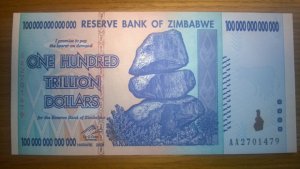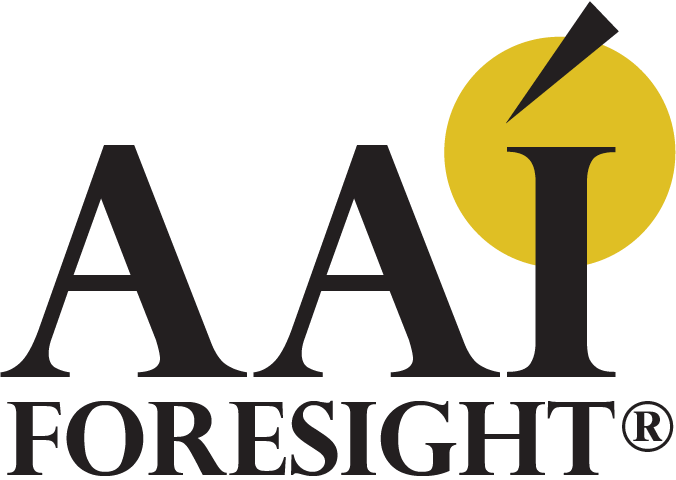
David N. Bengston
Submitted by David N. Bengston on

$100 trillion bill issued by Zimbabwe in January, 2009
One hundred trillion dollars is a lot to pay for toilet paper. Utterly ridiculous! But I have a piece of such toilet paper in my office to remind me of the importance of including wild cards – low probability, high impact events – in thinking about the future.
The “toilet paper” in question is actually legal tender. In the early years of the 21st century, the government of Zimbabwe began to print more and more banknotes with higher and higher face values in order to pay its expenditures. The eventual result was hyperinflation, sometimes defined as a monthly inflation rate of at least 50 percent (Cagan 1956). The peak monthly rate in Zimbabwe reached 79.6 billion percent in mid-November 2008 – still less than Hungary’s 1946 world record hyperinflation (Hanke and Kwok 2009). The largest denomination note issued by Zimbabwe was a 100 trillion dollar bill. Soon after this banknote was issued in January 2009 it was not enough to buy a single square of toilet paper.
Hyperinflation is a classic negative wild card. The probability is low but certainly not zero: There have been 30 hyperinflationary episodes (by Cagan’s definition) in countries around the world dating back to the French Revolution. The impacts of hyperinflation are dire: People’s life savings are wiped out, life insurance policies become worthless, real assets are hoarded, foreign investment instantly dries up, and economic chaos ensues. On the plus side, hyperinflation is good for people who are in debt because they can pay it off with worthless cash. But a complete breakdown of the economy is a steep price to pay for clearing your debt!
Many other examples of wild cards could be cited. Petersen (1997) identified and analyzed 78 potential wild cards, including abrupt climate change, a major breakthrough in nanotechnology, the development of self-aware machine intelligence, and a worldwide pandemic.
Emerging wild cards are difficult to identify and interpret, but several methods have been proposed. Petersen (1997) maintains that there are always early warnings of impending wild card events, but they’re frequently missed because we tend not to think about such events and the precursors that might signal their approach. By identifying potential positive and negative wild cards in advance through extensive and regular brainstorming, early indicators can be identified and monitored and plans to deal with their impacts can be developed. Other approaches to wild card scanning involve categorizing potential wild cards to make them easier to spot on the horizon. For example, Markley (2011) described a four-level wild card typology and a related method for monitoring their emergence and credibility. Mendonça et al. (2004) proposed a method based on the type of wild card, the subject area affected (e.g., economic, environmental, technological), and the nature and magnitude of potential impacts.
Consideration of wild cards is almost always neglected in traditional planning, which focuses on continuous change and what is deemed the most likely future. But as futurist Herman Kahn said, “The most likely future isn’t.” In other words, even what is considered to be the most likely future is a low probability event given the complex nature of social-ecological systems and the frequency of discontinuous change and surprise. The future will be full of surprises, some of them game changers with massive impacts. Futures thinking which explicitly includes wild cards can train us to expect the unexpected, facilitate the development of policies to increase adaptive capacity and resilience, and minimize the risk of being unprepared.
References
Cagan, P. 1956. The monetary dynamics of hyperinflation. Pages 159-165 in: M. Friedman (ed.), Studies in the Quantity Theory of Money. Chicago, IL: University of Chicago Press.
Hanke, S.H. and A.K.F. Kwok. 2009. On the measurement of Zimbabwe’s hyperinflation. Cato Journal 29(2): 353-364. URL: http://www.cato.org/pubs/journal/cj29n2/cj29n2-8.pdf
Markley, O. 2011. A new methodology for anticipating STEEP surprises. Technological Forecasting & Social Change 78(6): 1079-1097.
Mendonça, S., M.P. Cunha, J. Kaivo-oja and F. Ruff. 2004. Wild cards, weak signals and organizational improvisation. Futures 36(2): 201-218.
